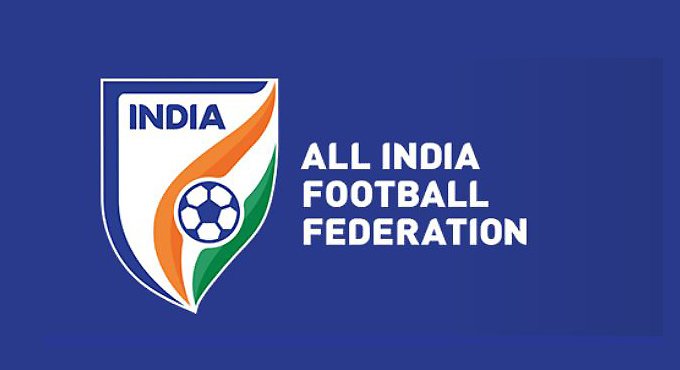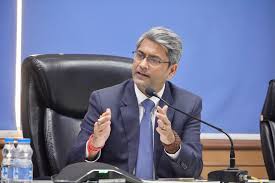UP Transport Department WhatsApp Chatbot : Get Driving License & Vehicle Details Instantly
All India Football Federation: when was it established, its role, Vision 2047, achievements and more.

All India Football Federation
All India Football Federation: The All India Football Federation (AIFF) is the governing body for football in India. It manages development, promotion, and regulation of the sport in the country. It is affiliated with FIFA (World), AFC (Asia), and SAFF (South Asia) and its president is Kalyan Chaubey.

When and where was it established?
The AIFF was established on 23 June 1937 and its headquarters was in Shimla, India. its headquarter was later moved to New Delhi.

What is the All India Football Federation role in Indian football?
The role of the All India Football Federation is:
- It is Managing National Teams. It Oversees Men’s, Women’s, and Youth National Teams (U-17, U-19, U-23) and organizes participation in international tournaments like AFC Asian Cup, FIFA World Cup Qualifiers, SAFF Championships and Olympic Qualifiers
- It also Organizes Domestic Competitions like Indian Super League, Santosh Trophy, Durand Cup, Indian Women’s League and more.
- It focuses on Grassroots and Youth level Development. It establishes football academies across India and collaborates with FIFA and AFC for training programs.

The role of the All India Football Federation - It is Promoting Women’s Football.
- It is also hosting and participating in International Events
- It also implements Policies and provides regulation.
- It helps in expanding Football Infrastructure.
The responsibility of AIFF.
Some responsibilities of AlFF is as follows:
- It oversees the rules, regulations, and policies for football in India.
- It ensures compliance with FIFA, AFC (Asian Football Confederation), and SAFF (South Asian Football Federation) regulations.
- It resolves disputes between clubs, players, and other officials.
- It supervises Men’s, Women’s, and Youth National Teams and organizes participation in international competitions.
- It also provides training, coaching staff, and development programs for players.

Some responsibilities of AlFF - It is responsible for running and regulating of Indian Super League (ISL), I-League, Santosh Trophy, Durand Cup, Indian Women’s League (IWL)
- It implements Baby Leagues and school-level tournaments also.
- It supports football academies across India.
- It partners with FIFA and AFC for training and scouting programs.
- It is a traditional league system which is supporting club football.
The challenges faced by AIFF.
Some of the responsibility of AIFF is:
- Many Indian cities lack world-class stadiums and training facilities.
- There is a poor quality pitches, inadequate floodlights, and lack of proper seating arrangements in stadiums.
It has limited availability of grassroots training centers, academies and more. - India’s men’s national team struggles to qualify for major tournaments like the FIFA World Cup.
- India’s FIFA ranking fluctuates around 100-110, far from being a footballing powerhouse.
- The women’s team lacks regular exposure to strong international opponents.
- It does not attract the same level of corporate sponsorships and investments as cricket.
- Many clubs and state associations struggle with financial instability.
- It has a limited broadcasting revenue and lower fan engagement compared to global football leagues.

The challenges faced by AIFF. - The Indian Super League (ISL) and I-League have had conflicts regarding their status.
- It has a lack of a promotion-relegation system. Which makes it difficult for smaller clubs to rise.
- The football development is concentrated in a few regions only like West Bengal, Kerala, Goa, and the Northeast.
- There is a lack of structured school and college football programs across India.
- The football season in India lasts only 6-7 months, unlike European leagues that run for 9-10 months.
- There is a fewer matches mean players have limited opportunities for improvement.
- The football has passionate fans in states like West Bengal, Kerala, and the Northeast, but struggles in other parts of India.
- It has faced controversies, including mismanagement and lack of transparency.
- It has slow implementation of long-term plans like Vision 2047
- Apart from this, Women’s football receives less funding, fewer leagues, and lower visibility than men’s football.
- It has a lack of a strong club structure for female players.
- The football struggles to get consistent media coverage and national attention.
What are its achievements?
Some of its achievements are:
- It has hosted many International Tournaments.
- There is a growth of Domestic Football Leagues and more.
- It has a improvement in FIFA Rankings.
- There are many National Team Achievements.

Some of its achievements - There is a grassroots and Youth level development.
- It has Vision 2047, which is a Long-Term Development Plan.
- It is strengthening Women’s Football.
- It has international Recognition and Collaborations.
Also Read This: UPI down: How did it happen, what are the reasons, its impacts and action taken by NPCI in 1 hour.





